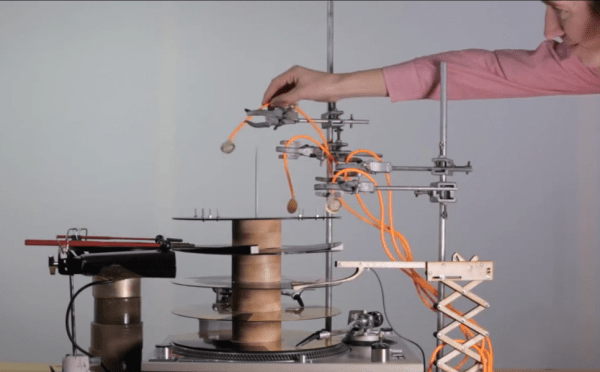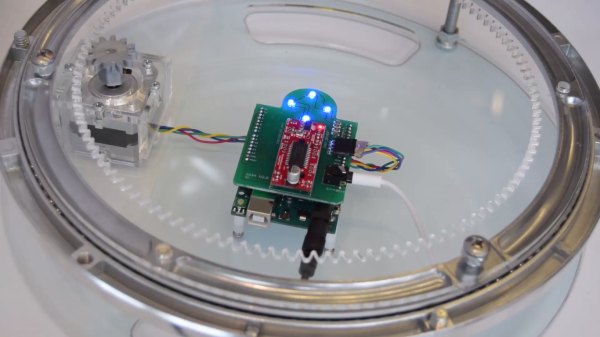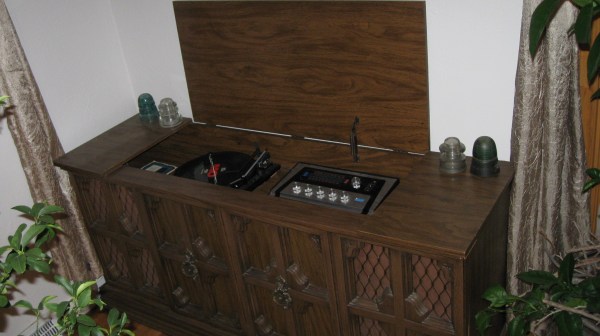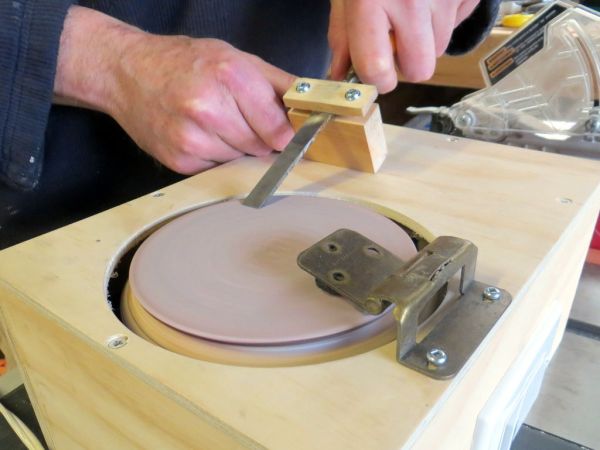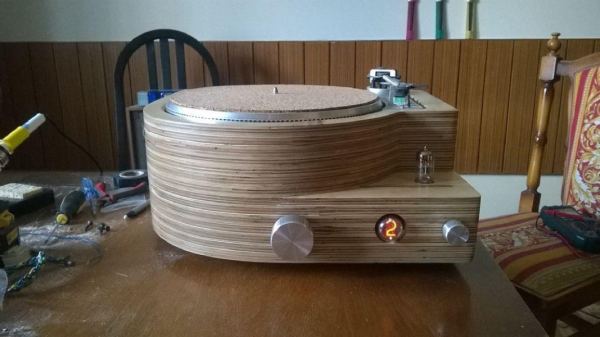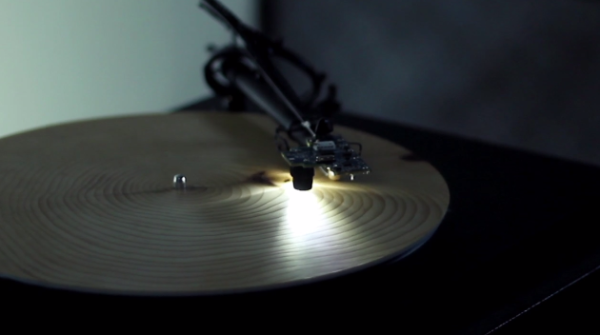We’ve got to admit, we don’t have any idea what to call this hack. Artist [Graham Dunning] refers to it somewhat dryly as the “Mechanical Techno method”, but that doesn’t quite do it justice. We’re thinking “Turntable-sequencer-synthesizer-beat-box-dub-stepper thingy. With cowbell.”
Call it what you will, but [Graham] has really gone the distance in extracting as much sound as possible from the humble turntable, which is used as more of a synchronizer than a sound source. Although it does play records too – at least part of them; [Graham] masks the grooves and anchors the tone arm so that only part of a track is played. Other records are masked with conductive film over which wiper contacts are placed, providing triggers for various synthesizers. Particularly clever is the mechanical percussion section; a record is cut radially to form cams that mechanical followers trip over periodically to hit either the cone of a woofer for bass notes, or a cowbell for – well, cowbell.
It may not appeal to everyone, but you’ve got to admit there’s something mesmerizing about watching this rig in action. The beat is pretty catchy, and as you can see in the live performance video after the break, there’s a lot of room for [Graham] to express himself with this instrument. We wouldn’t mind seeing how Compressorhead would put this rig to work in their performances either.
Continue reading “Turntable Sequencer Keeps The Techno Beat”

